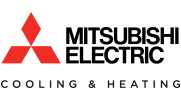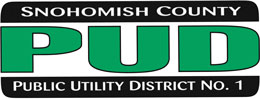Winter is fast approaching. That means, if you’re a homeowner, it’s time to prep your furnace. Getting your heating system tuned up before the cold really sets in may not be the most exciting task, but neglecting this can lead to some serious headaches down the road.
Without proper preparation, you’re flirting with disaster – middle-of-the-night breakdowns, astronomical energy bills from an inefficient furnace working overtime, or even potential safety issues.
If you want to avoid these issues, invest a little effort into prepping your furnace now. It’s the best way to maximize energy efficiency to keep utility costs manageable. You’ll also ensure consistency, even heating all winter for ultimate coziness. And fewer surprise repair calls mean more peace of mind.
Don’t get caught out in the cold this year. Take some simple preventative steps to get your furnace ready to tackle winter’s worst. Your future self stuck inside during a blizzard will be thanking you.
Replace or Clean Furnace Filters
This simple maintenance task is a total game-changer when it comes to furnace performance. Here’s the deal…
Those filters are the unsung heroes of your heating system’s efficiency. Once they get clogged up with dust, dirt and hair, airflow gets seriously restricted. Your furnace then has to work overtime trying to make up for that lack of circulation causing excessive energy waste and strain on components.
Avoid that nightmare by swapping out those filters regularly. For most homes, that means changing them every 1-3 months during peak heating season. But you’ll want to adjust that timeline based on your individual conditions. If you’ve got pets shedding up a fur storm or allergies requiring superior air filtration, plan on monthly changes.
Replacing the filter is refreshingly simple – no tools or professional help required! Just locate the filter slot, usually in the furnace blower compartment or return air duct. Give the old filter a firm pull to remove it, then slide the new one into place making sure it’s secured properly. That’s seriously it! A few minutes of your time for huge efficiency gains.
So stay on top of those filter changes. Your furnace, energy bills, and comfort levels will thank you.

Test the Thermostat for Proper Functionality
Don’t let a faulty thermostat leave you freezing or roasting all winter long. This small but mighty device controls your entire heating system, so you have to make sure it’s in tip-top shape.
First things first, check the settings. Make sure that it is switched over to “heat” mode and the temperature is set to your desired coziness level. No point firing up the furnace if the thermostat thinks you want arctic air conditioning.
Speaking of smart temperature control, this is also the perfect time to consider upgrading to one of those fancy wifi thermostats. With automated scheduling and remote access from your phone, you can maximize energy savings by only heating your home when you actually need it. The long-term cost savings make it a smart investment.
Learn about the NEST thermostats we install.
If your home just never seems to reach the set temperature no matter what you do, your thermostat may need some recalibration or relocation love. Thermostat reading a toasty 72 but you’re shivering in your parka? Time to have a professional take a look and get it reading accurately again.
Don’t let thermostat troubles be the Grinch that stole your winter warmth. A quick once-over now means one less headache to deal with later.
Clean the Furnace and Ventilation System
It’s crucial to get that furnace and ductwork spick-and-span before things really heat up this winter. A good deep clean is crucial for safety and efficiency.
First up, don’t neglect the area surrounding your furnace unit itself. All that dust and debris buildup can seriously gunk up the works over time. Less airflow means your system has to work harder, which wastes energy and money. Even worse, it creates a potential fire hazard if things get too clogged and overheated. Not a risk you want to take!
But it’s not just the furnace cabinet that needs some TLC, but also your vents and ductwork. Surprised at just how much dust and dander has accumulated there? Yeah, that nasty buildup doesn’t just make your house feel dingy. It can actually restrict airflow and reduce your system’s heating capacity and efficiency over time.
If you start noticing excessive dust coming from vents, musty odors, or visible buildup, it may be time to call in a professional duct cleaning crew. They’ve got the heavy-duty equipment to do a thorough deep clean of your entire ductwork system.
One last step – do a quick walk-through to ensure all vents and returns are free and clear of any obstructions. Closed or blocked vents make your furnace work way harder to distribute that hot air. An easy fix that’ll seriously boost efficiency!
So don’t cut corners on this crucial cleaning. A little preventative scrubbing now means optimum furnace performance all winter long.
Inspect and Clear the Furnace Exhaust and Intake Pipes
Make sure to inspect those exhaust and intake pipes connected to your furnace. It’s easy to overlook this step, but it’s absolutely crucial because any blockages or leaks can quickly create hazardous conditions in your home.
Make sure that the pipes aren’t obstructed by built-up debris like leaves, nests, or snow and ice over the winter months. Anything blocking these pipes will prevent your furnace from properly venting gasses outside or drawing in fresh combustion air. That’s a fast-track to inefficient performance at best, and potential carbon monoxide buildup at worst – an extreme safety hazard.
You should also watch out for any cracks, holes, or separations in these pipes because they can allow deadly carbon monoxide to leak into your living space. CO is a stealthy killer since it’s colorless, odorless, and initially causes flu-like symptoms that are easy to brush off as nothing serious until it’s too late.
Having working carbon monoxide alarms is an absolute must with any gas-fired furnace or appliance. Consider them your first line of defense against this invisible threat. If those alarms go off, it means unsafe CO levels are present and you need to immediately evacuate and get the problem fixed before re-entering.
Don’t overlook this simple preventative check. Taking 10 minutes to inspect those exhaust and intake pipes can avoid catastrophic safety hazards. It’s an easy way to buy peace of mind all winter long.
Check Furnace Ignition or Pilot Light
While we’re on the topic of furnace safety, let’s talk about that all-important ignition system. Whether you’ve got an old-school pilot light or a newer electronic igniter, you’ll want to give it a thorough inspection.
If you’ve still got a standing pilot, the flame should burn a crisp, bright blue color. A yellow or orange flickering flame is a red flag that something’s not quite right with the gas flow or ventilation. That unstable flame could produce excess carbon monoxide – not something you want filling your home.
As for furnaces with electronic ignitions, you’ll want to do a quick test to ensure it still sparks properly when calling for heat. The igniter should glow bright orange or white hot before igniting the gas. If it’s not lighting or you notice any delays or misfires, that’s cause for concern.
Luckily, some ignition system hiccups can be resolved pretty easily by going through a few basic troubleshooting steps. Try resetting the system by killing power to the furnace for a couple minutes before restoring it. Or you may just need to give that igniter a quick cleaning to remove any built-up residue.
But if those simple fixes don’t get your ignition system functioning like it should, don’t keep messing with it yourself. That’s a good time to call in a professional furnace technician to diagnose and repair the underlying issue safely. You don’t want to cause an ignition malfunction that could potentially lead to a gas leak or fire.
Bottom line – whether you’ve got an old-fashioned pilot or high-tech hot surface igniter, make sure it’s operating correctly before really firing up that furnace this winter.
Lubricate Furnace Components
Now let’s talk about some good old-fashioned mechanical maintenance.
Think about all the moving metal parts inside your furnace that have to operate under intense conditions year after year. Just imagine blower motors spinning those big fan blades or bearings helping shafts rotate smoothly. With all that friction and heat, these components are destined to dry out and wear down over time without some lubrication love.
For many furnaces, the main things you’ll want to apply a fresh coat of lithium grease to are the blower motor and those fan blades. But check your owner’s manual, as every system is a bit different in terms of which parts need that lubricating TLC.
How can you tell if it’s time to lubricate? Your ears will be the first to notice when things start running a little rough. If you hear any squeaking, squealing, or grinding noises coming from the furnace every time it kicks on, your furnace is asking you for help.
By addressing those lubrication needs ASAP, you can extend the lifespan of your furnace’s components and avoid more expensive repairs down the road. After all, replacing an entire blower motor isn’t exactly cheap!
Test the Furnace for a Trial Run
With all that prep work done, it’s time for the final exam – a good old-fashioned trial run before you really need to lean on your furnace this winter.
About a week or two before that first frigid cold snap hits, go ahead and fire up the furnace for a nice controlled test drive of an hour or so. But don’t just turn it on and walk away! Use this as an opportunity to give it your full undivided attention and be on high alert for any weird symptoms.
Start by giving it a careful listen. Are there any strange rattling, squeaking, or grinding noises you didn’t notice last season? That could mean there is something wrong with the blower motor, bearings, or another component in need of service. A well-maintained furnace should operate with just a gentle whirring hum.
Next, do a temperature check around the home. Ideally, you want relatively consistent and even heating from room to room. If some areas seem to be running way hotter or colder than others, it may indicate an airflow issue that needs addressing.
Finally, use your nose! When you first kick on the furnace after an offseason, it’s normal for it to produce some mild, burnt dust smells as residue burns off the heat exchanger. But that odor should dissipate pretty quickly. If it persists or gets worse over time, it could signal a more serious ventilation issue.
A successful trial run with no red flags gives you the green light that your furnace is ready for primetime heating duties. But if you do pick up on any potential problems, you’ve still got wiggle room to call in a pro for repairs before winter is in full swing.
Schedule a Professional Furnace Inspection
Even though you’ve been a furnace prep superstar handling all those DIY tasks yourself, you should still schedule that professional inspection every year before the heating season.
Furnaces are complex mechanical systems with a lot of crucial safety components. Having an expert set of trained eyes giving it a thorough once-over is the only way to ensure everything is operating at peak performance and catch any potential issues early before they become costlier problems.
When that HVAC tech comes out, they’ll put your furnace through the wringer with a multi-point inspection. We’re talking about checking for cracks in the heat exchanger that could leak deadly carbon monoxide, testing gas connections for any hazardous leaks, cleaning soot off the burners for maximum efficiency, lubricating all those moving parts – the whole nine yards.
Their trained eyes will spot red flags that even a seasoned DIYer could easily miss. Maybe the flue is getting corroded or the blower motor is showing signs of excessive wear. Catching those issues now means a simple repair to extend your furnace’s life, versus an untimely breakdown in the dead of winter.
This level of comprehensive inspection is why many smart homeowners opt for an annual HVAC maintenance plan. Usually for a reasonable fee, you get priority service, discounts on any needed repairs, and most importantly – peace of mind knowing your heating system has gotten the professional seal of approval before winter strikes.
Get Your Furnace Ready for Winter’s Worst
As winter approaches, you should be getting your furnace ready to battle the cold. The last thing you want is for it to malfunction when you and your family need it the most. Having it properly maintained and serviced, either through DIY methods or (better yet) professional HVAC services, pays off big time. It’s a wise investment no homeowner should overlook.
Don’t gamble your safety and your family’s comfort with an unreliable furnace when the cold months hit. Take charge by calling our team at BelRed at (855) 345-6161 to schedule affordable tune-up services.







